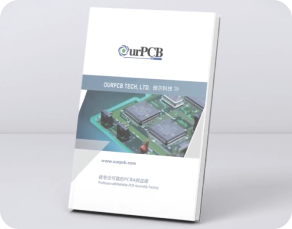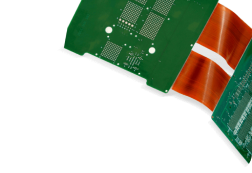Aluminum PCB Manufacturer
- Professional engineer review; strict quality control for each process.
- Advanced Testing Technology To Ensure the Quality such as AOI Test, E-Test, X-RAY, Impedance Control.
- We committed to helping customers get the highest quality products and services with competitive prices (especially multilayers PCBs).
 5 Star Rating on
5 Star Rating on

- 1Order and Procurement
- 2PCB Manufacturing and Preparation
- 3Assembly and Soldering
- 4Inspection and Quality Control
- 5Finalization and Shipping
- Bare PCB in 8 working hours
- PCBA with components in 2 working days
- Bare PCB manufacturing
- Components sourcing
- PCB assembling
- Wire harness manufacturing
- Casing /Housing manufacturing
- Programming/Testing
Adrian Leitch


Andrew Durrant


Andrew Peeler


Andrew Wood


Ben Thomas


Darren Larosa


Debra Beukes


Eastern Europe Archives


frankyc


Fred Van


Greg MacDonald


John Powell


Jonathan Pippard


Jordan Thurgood


Justin Regan


Mark A


Mark Pagura


Maryanne Hassell


Matthew O'Neill


mitch clark


Oli


Peter Lambert


Sasha Marks


Slavko Mali


SPI MX


Steve Visser


Steven Munari


Steven Vatev


Tane Pendragon


Tasmiah Khan


Trevor Gardner


Free Consultation
Need Aluminum PCB Manufacturing?
At OurPCB, we’re committed to providing top-quality aluminum PCBs, trusted by satisfied customers worldwide, especially in the USA. Our aluminum PCBs are engineered with a metal substrate for superior heat conduction and feature a dependable FR4 base with an aluminum core, ensuring optimal performance for your projects.
Ideal for high-power or tight-tolerance devices, these PCBs efficiently cool components and enhance performance. As a leading PCB assembly manufacturer, we provide high-quality, reliable PCB assembly services to meet all your electronic needs.
about ALUMINUM PCBs
These PCBs are layered with silkscreen, solder mask, and copper. They also come in a metal substrate to replace the fiberglass material, typically used on other types of boards.
The base material of aluminum PCB comes with the regular FR4 and an aluminum core. These boards are usually a solution for tight-tolerant or high power devices because it has great heat conduction abilities that make them less susceptible to thermal expansion than other materials like copper.
Hence, the aluminum PCB comes with a thermal layer that is clad and efficiently dispels heat. In summary, it helps to cool down components and increases electronic devices’ performance.
ALUMINUM PCBS BENEFICIAL
The aluminum in your electronics can help you with heat dissipation and minimize the adverse effects on circuitry. Compared to fiberglass or ceramic, it has great durability and strength that will not allow for any degradation of electronic appliances.
Environmentally Friendly
- One remarkable feature of aluminum is its recyclable nature, and it’s non-toxic. Hence, using the metal for production promotes energy conservation thanks to its ease of assembly.
Light-weight
- Aluminum PCBs are quite durable and lightweight metals. Plus, the metal contributes to the resilience and strength of a PCB. And it doesn’t add extra weight.
Highly Durable
- It’s because aluminum poses as a sturdy base material. So, it can reduce breakage that may occur during everyday use, production, and handling.
Cost-Effective
- Aluminum is a more cost-effective option compared to other metals.
Better Heat Transfer
- Aluminum is a great example of metals that help transfer heat away from vital parts. As a result, it reduces the harmful effect that the circuit board may have gotten.
THE BUILD LAYOUT OF ALUMINUM PCB
The structure or assemblage of aluminum PCBs comprises of four layers, namely:

Copper Foil Layer
- This layer is usually thicker than the regular CCLs, which measures about 1 oz – 10oz. Also, a thicker copper layer equally means it possesses a bigger current carrying capacity.
Dielectric Layer
- The dielectric layer It has a part with thermal conductivity, and it’s usually about 50 μm to 200μm in thickness. Plus, the layer has a relatively low thermal resistance, and it’s ideal for its applications.
Aluminum Base
- This aluminum base is the third layer—made from an aluminum substrate. So, its thermal conductivity level is very high.
Aluminum Base Membrane Layer
- This layer is usually selective—compared to other layers. It helps to protect the aluminum surface from unnecessary scratching and etching. However, it comes in two types; one is an anti-high temperature usually about 250 degrees. And the other is lower than 120 degrees.
THE PRODUCTION CAPABILITIES OF OURPCB
| Features | Capabilities |
|---|---|
| Material: | FR4 covering, aluminum core, copper core |
| Surface finishing: | ENEPIG plating, immersion gold, immersion silver, hard gold, OSP |
| Testing: | A.O.I testing and Fly Probe Testing |
| Thermal conductivity: | 2.0 W/(m*k), 1.0 W/(m*k) |
| Board thickness: | 0.4-3.2 mm |
| Silkscreen: | Black, white |
| Build time: | Three days |
| Solder mask: | Black, matte green, green, yellow, red, white, purple, matte black |
| Base material: | Rogers, flex, aluminum, flex-rigid, FR4, etc. |
| Via process: | Vias not covered, tenting vias, plugged vias. |
| Lead time: | 2-3 days |
| Min. hole size: | 0.8 mm |
| Finish copper: | 1-4 oz |
| Min. spacing: | 4 mil |
THE TYPES OF ALUMINUM PCBs

Flexible Aluminum PCBs
top-notch flexibility, electrical insulation, and thermal conductivity

Multilayer Aluminum PCBs
The multilayer aluminum PCBs make up multilayers of dielectric materials that have thermal conductive characteristics.
Therefore, these aluminum PCBs are great heat dissipation agents designed for sophisticated solutions.

Through-hole Aluminum PCBs
These through-hole aluminum PCBs are most suitable for electric insulation, and they pass metal clearances easily.
The through-hole aluminum PCBs have been pre-drilled and back-filled with a dielectric component.

Hybrid Aluminum PCBs
By thermally fusing an aluminum base material to a processed non-thermal material, you’ll get Hybrid aluminum PCBs.
Normally, you can use thermal dielectric material to fuse two- or four-layer FR-4 boards to an aluminum base.
In the end, the hybrid PCBs come with a heat-shield, increased sturdiness, and heat dissipation agent.







Take a Factory Tour!
OurPCB Shijiazhuang opened in 2007. Today, this factory spans over 6,000 meters in total, is equipped with 5 SIEMENS SMT lines, and has 200 employees. 90% of the business at our factory in Shijiazhuang is for advanced PCB assembly.
We went on to build our second factory in Shenzhen in 2017. This factory is about half the size of Shijiazhuang, but it boasts 7 YAMAHA SMT lines, X-ray, and AOI. It’s dedicated to standard assembly service and employs 110 people.
In 2014, we opened OurPCB in Melbourne, Australia, to provide services to our English-speaking customers across the world.









